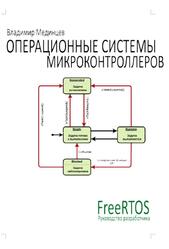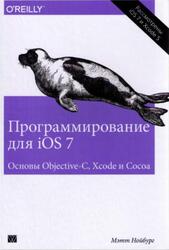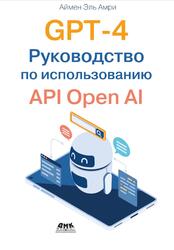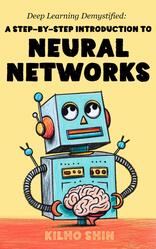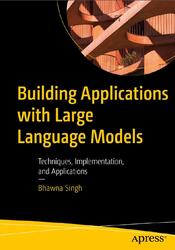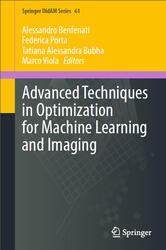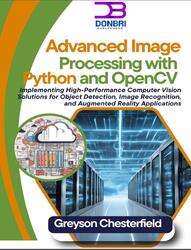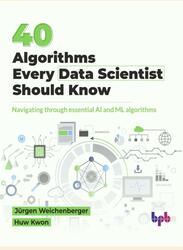Modern search is more than keyword matching. Much, much more. Search that learns from user interactions, interprets intent, and takes advantage of AI tools like large language models (LLMs) can deliver highly targeted and relevant results. Th is book shows you how to up your search game using state-of-the-art AI algorithms, techniques, and tools.
AI-Powered Search teaches you to create a search that understands natural language and improves automatically the more it is used. As you work through dozens of interesting and relevant examples, you’ll learn powerful AI-based techniques like semantic search on embeddings, question answering powered by LLMs, real-time personalization, and Retrieval Augmented Generation (RAG).
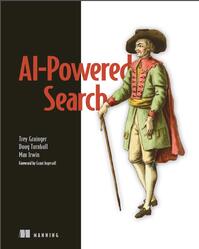
Modern search relevance.
Search engines serve as the gateway to accessing most of human knowledge. Web search engines offer a queryable cache of the internet, allowing you to instantly find information on any topic across billions of websites. Generative AI (artificial intelligence) relies heavily on search engines to perform retrieval augmented generation (RAG), which is the process of using search to find relevant context to provide to AI models so that they generate accurate responses for incoming prompts.
Search algorithms also power matching and ranking in most data-driven applications: from e-commerce, to email, to social media, to company intranets and private filesystems. Performing search well requires optimizing search relevance—the ability to find and rank the most relevant results for a given query.
In this first part of the book, we will explore modern search relevance. Chapter 1 provides an introduction to Al-powered search, highlighting the major topics you’ll learn throughout the book. Chapter 2 is about working with natural language, providing background into key natural language processing (NLP) concepts needed to implement Al-powered search. Chapter 3 then dives into relevance ranking, covering the mechanics of how search engines and vector databases find and rank the best results for a given query. Finally, chapter 4 covers crowdsourced relevance, the process of using ongoing user interactions with your search results to learn models that improve relevance ranking.
CONTENTS.
Foreword.
Preface.
Acknowledgments.
About this book.
About the authors.
About the cover illustration.
PART 1 MODERN SEARCH RELEVANCE.
1 Introducing AI-powered search.
1.1 What is AI-powered search?.
1.2 Understanding user intent.
1.3 How does AI-powered search work?.
2 Working with natural language.
2.1 The myth of unstructured data.
2.2 The structure of natural language.
2.3 Distributional semantics and embeddings.
2.4 Modeling domain-specific knowledge.
2.5 Challenges in natural language understanding for search.
3 Ranking and content-based relevance.
3.1 Scoring query and document vectors with cosine similarity.
3.2 Controlling the relevance calcul.
3.3 Implementing user and domain-specific relevance ranking.
4 Crowdsourced relevance.
4.1 Working with user signals.
4.2 Introducing reflected intelligence.
PART 2 LEARNING DOMAIN-SPECIFIC INTENT.
5 Knowledge graph learning.
5.1 Working with knowledge graphs.
5.2 Using our search engine as a knowledge graph.
5.3 Automatically extracting knowledge graphs from content.
5.4 Learning intent by traversing semantic knowledge graphs.
5.5 Using knowledge graphs for semantic search.
6 Using context to learn domain-specific language.
6.1 Classifying query intent.
6.2 Query-sense disambiguation.
6.3 Learning related phrases from query signals.
6.4 Phrase detection from user signals.
6.5 Misspellings and alternative representations.
6.6 Pulling it all together.
7 Interpreting query intent through semantic search.
7.1 The mechanics of query interpretation.
7.2 Indexing and searching on a local reviews dataset.
7.3 An end-to-end semantic search example.
7.4 Query interpretation pipelines.
PART 3 REFLECTED INTELLIGENCE.
8 Signals-boosting models.
8.1 Basic signals boosting.
8.2 Normalizing signals.
8.3 Fighting signal spam.
8.4 Combining multiple signal types.
8.5 Time decays and short-lived signals.
8.6 Index-time vs. query-time boosting: Balancing scale vs. flexibility.
9 Personalized search.
9.1 Personalized search vs. recommendations.
9.2 Recommendation algorithm app.
9.2 Recommendation algorithm approaches.
9.3 Implementing collaborative filtering.
9.4 Personalizing search using content-based embeddings.
9.5 Challenges with personalizing search results.
10 Learning to rank for generalizable search relevance.
10.1 What is LTR?.
10.2 Step 1: A judgment list, starting with the training data.
10.3 Step 2: Feature logging and engineering.
10.4 Step 3: Transforming LTR to a traditional machine learning problem.
10.5 Step 4: Training (and testing!) the model.
10.6 Steps 5 and 6: Upload a model and search.
10.7 Rinse and repeat.
11 Automating learning to rank with click models.
11.1 (Re)creating judgment lists from signals.
11.2 Overcoming position bias.
11.3 Handling confidence bias: Not upending your model due to a few lucky clicks.
11.4 Exploring your training data in an LTR system.
12 Overcoming ranking bias through active learning.
12.1 Our automated LTR engine in a few lines of code.
12.2 A/B testing a new model.
12.3 Overcoming presentation bias: Knowing when to explore vs. exploit.
12.4 Exploit, explore, gather, rinse, repeat: A robust automated LTR loop.
PART 4 THE SEARCH FRONTIER.
13 Semantic search with dense vectors.
13.1 Representation of meaning through embeddings.
13.2 Search using dense vectors.
13.3 Getting text embeddings by using a Transformer encoder.
13.4 Applying Transformers to search.
13.5 Natural language autocomplete.
13.6 Semantic search with LLM embeddings.
13.7 Quantization and representation learning for more efficient vector search.
13.8 Cross-encoders vs. bi-encoders.
14 Question answering with a fine-tuned large language model.
14.1 Question-answering overview.
14.2 Constructing a question-answering training dataset.
14.3 Fine-tuning the question-answering model.
14.4 Building the reader with the new fine-tuned model.
14.5 Incorporating the retriever: Using the question-answering model with the search engine.
15 Foundation models and emerging search paradigms.
15.1 Understanding foundation models.
15.2 Generative search.
15.3 Multimodal search.
15.4 Other emerging Al-powered search paradigms.
15.5 Hybrid search.
15.6 Convergence of contextual technologies.
15.7 All the above, please!.
Appendix A Running the code examples.
Appendix В Supported search engines and vector databases.
Index.
Бесплатно скачать электронную книгу в удобном формате, смотреть и читать:
Скачать книгу AI-Powered Search, Grainger T., Turnbull D., Irwin M., 2025 - fileskachat.com, быстрое и бесплатное скачивание.
Скачать pdf
Ниже можно купить эту книгу, если она есть в продаже, и похожие книги по лучшей цене со скидкой с доставкой по всей России.Купить книги
Скачать - pdf - Яндекс.Диск.
Дата публикации:
Теги: учебник по программированию :: программирование :: Grainger :: Turnbull :: Irwin
Смотрите также учебники, книги и учебные материалы:
Следующие учебники и книги:
Предыдущие статьи:


